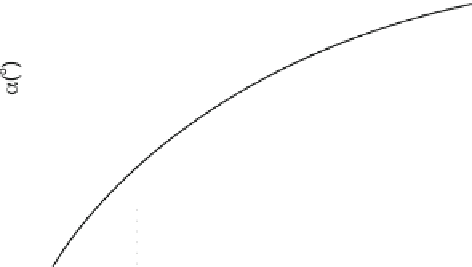Biomedical Engineering Reference
In-Depth Information
Fig. 6.4
Angle
of the contact force
C
with the vertebral column. The angle of this force with the
horizontal can be obtained by subtracting it from 30
which is the angle of the column with
the horizontal
α
6.6.2 Forces Involved in the Spinal Column
When the Posture Is Correct
Let us now analyze what, and by how much, changes when a person lifts an object
from the ground correctly, bending the knees. You probably noticed that the
changes are in the angle
Φ
of the column with the horizontal, which becomes
larger. We perform the calculations in order to obtain the intensities of muscle force
F
and that of contact force
C
, varying the angle
Φ
from 10
to 70
in steps of 10
.
Figures
6.5
and
6.6
show the muscle forces and the contact forces as a function of
angle
, with the mass that the person lifts of 0 kg (this person will not lift any
additional weight, but will have to raise his head + two(arms/forearms/hands)),
20 kg, and 50 kg, as the parameter.
The force exerted by the spinal erector muscle decreases with the increase of the
angle
Φ
of the column with the horizontal, which results from bending the knees
and crouching to lift an object from the ground. As the column is maintained
straighter (vertical), the greater is the angle
Φ
leading to a correspondingly smaller
muscle force. The decrease is of 2.9 times if we compare the situations in which the
bending of the spine in relation to the horizontal goes from 10
to 70
, indepen-
dently of the lifted mass.
The decrease of the muscle force is not linear with the increase of the angle
Φ
Φ
.
goes from 30
to 70
, the decrease obtained is 2.5 times. We remember that
the curves of Fig.
6.3
were obtained for the angle
As
Φ
equal to 30
whose value is a
very common incorrect posture adopted daily. These calculations show quantita-
tively the importance in adopting the correct posture.
Φ













































































